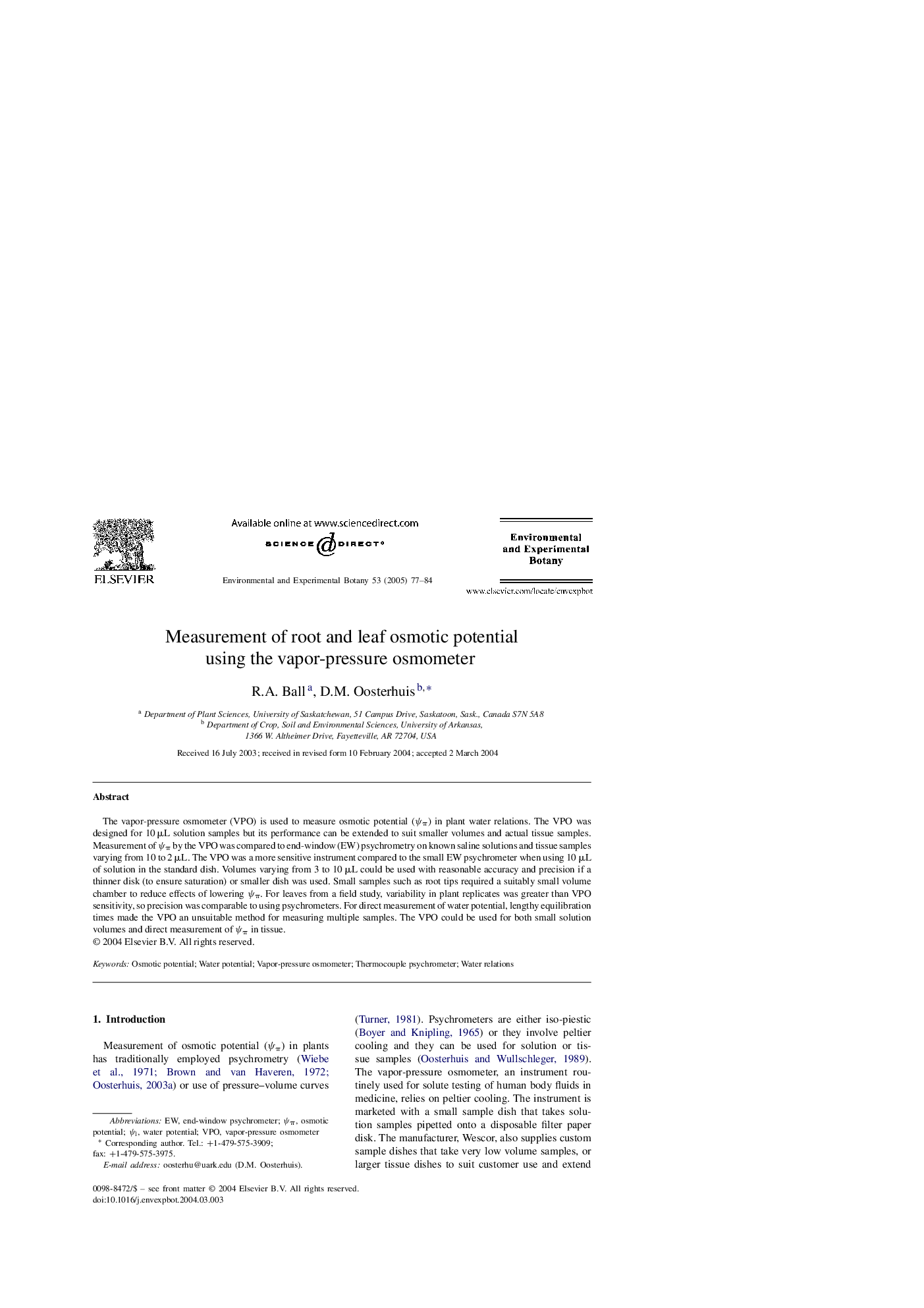| Article ID | Journal | Published Year | Pages | File Type |
|---|---|---|---|---|
| 9485727 | Environmental and Experimental Botany | 2005 | 8 Pages |
Abstract
The vapor-pressure osmometer (VPO) is used to measure osmotic potential (ÏÏ) in plant water relations. The VPO was designed for 10 μL solution samples but its performance can be extended to suit smaller volumes and actual tissue samples. Measurement of ÏÏ by the VPO was compared to end-window (EW) psychrometry on known saline solutions and tissue samples varying from 10 to 2 μL. The VPO was a more sensitive instrument compared to the small EW psychrometer when using 10 μL of solution in the standard dish. Volumes varying from 3 to 10 μL could be used with reasonable accuracy and precision if a thinner disk (to ensure saturation) or smaller dish was used. Small samples such as root tips required a suitably small volume chamber to reduce effects of lowering ÏÏ. For leaves from a field study, variability in plant replicates was greater than VPO sensitivity, so precision was comparable to using psychrometers. For direct measurement of water potential, lengthy equilibration times made the VPO an unsuitable method for measuring multiple samples. The VPO could be used for both small solution volumes and direct measurement of ÏÏ in tissue.
Related Topics
Life Sciences
Agricultural and Biological Sciences
Ecology, Evolution, Behavior and Systematics
Authors
R.A. Ball, D.M. Oosterhuis,
